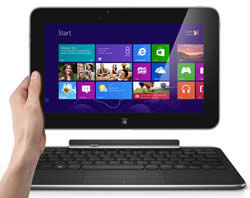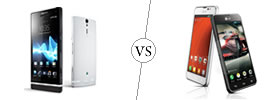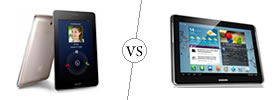Difference between Dell XPS 10 and Nexus 10
Key Difference: The Dell XPS 10 is a 10.1-inch tablet that comes with a keyboard Dock to make it into a laptop. The screen is an HD Display capacitive multi-touch screen, with 1366 x 768 pixels and an approximately 155 ppi pixel density. The Nexus 10 is a tablet computer running Android 4.2 (also named Jelly Bean) operating system, which was released with it. It was developed in collaboration with Samsung.
Dell is a popular company that is well-known for its customizable computers. It allowed people to build laptops and desktops from scratch, adding only components they need and paying only for those components. It has become a popular name in laptops, but has yet to launch itself in the tablet market. In response to the growing market for tablets the company has launched Dell Streak, which did not manage to garner much positive response for the company. Dell announced in August that is launching its newest table the Dell XPS 10 in October 2012.
 The Dell XPS 10 is a 10.1-inch tablet that comes with a keyboard Dock to make it into a laptop. The tablet serves the purpose of fulfilling the need for the tablet on the go and a laptop for some serious professional work. The company has launched the tablet on the Windows RT OS, which have not been able to draw in many customers. According to every review website, the company has not been doing that well in sales of tablets due to the Windows OS. However, the design of this tablet and its features should bring in loyal Dell fans to the product. The screen is an HD Display capacitive multi-touch screen, with 1366 x 768 pixels and an approximately 155 ppi pixel density, which is not the best resolution available on the tablets, but it wasn’t that bad when viewing the tablet. The sleek tablet has a metal chassis and has a rubber back for better gripping. The tablet itself is quite sleek and lightweight making it easier to carry. The screen is small though because of the black bezel on the screen. The screen is made using Asahi Dragontrail high strength glass for durability.
The Dell XPS 10 is a 10.1-inch tablet that comes with a keyboard Dock to make it into a laptop. The tablet serves the purpose of fulfilling the need for the tablet on the go and a laptop for some serious professional work. The company has launched the tablet on the Windows RT OS, which have not been able to draw in many customers. According to every review website, the company has not been doing that well in sales of tablets due to the Windows OS. However, the design of this tablet and its features should bring in loyal Dell fans to the product. The screen is an HD Display capacitive multi-touch screen, with 1366 x 768 pixels and an approximately 155 ppi pixel density, which is not the best resolution available on the tablets, but it wasn’t that bad when viewing the tablet. The sleek tablet has a metal chassis and has a rubber back for better gripping. The tablet itself is quite sleek and lightweight making it easier to carry. The screen is small though because of the black bezel on the screen. The screen is made using Asahi Dragontrail high strength glass for durability.
The device has a SIM card slot for optional 2G, 3G and 4G capability, if required. The tablet comes with 32/64 GB Flash Storage and also has a microSD slot that allows users to upgrade the internal storage capacity by 64 GB. The system is powered by a 1.5GHz Dual-core processor and has a Qualcomm Snapdragon S4 GPU. The device provides a 2GB RAM, which allows serious multi-tasking capabilities. The tablet provides Bluetooth, Wi-Fi and USB capability. The dock (keyboard), when attached provides two extra USB 2.0 slots on either side. The keyboard is also sleek and thin with dedicated Windows soft keys and trackpad. Both the tablet and the keyboard have a charging port. This is because when docked, the charging port on the bottom of the device gets covered by the keyboard and the user can still charge using the secondary port. The tablet has a 5MP rear camera with autofocus ability, but it lacks a flash. This results in distorted images in dark lighting. The camera also has weak video performance and the sharpness must be constantly updated during recording. The device also houses a 2MP secondary camera that is decent for snapshots and video conferencing.
The device houses a non-removable 28Wh 2-cell lithium-ion battery that provides 10 hours, 30 minutes of multimedia time, while the dock has an additional 27 Wh battery that extends battery life to 18 hours, 18 minutes. The device also fared decently during gaming tests. All of the devices are available Office Home & Student 2013 RT that can be changed and customized on the company’s website before shipping. The Windows OS only allows downloading apps from the Windows Stores, which does not have that many choices in apps. The tablet has been designed to be used as a personal tablet as well as a professional laptop, eliminating the need for spending on both.

Among the number of various companies launching phones based on Google’s Android, Google has also launched its own line of smartphones based on Android, called the Google Nexus. Each device in the Nexus line is produced via collaboration between Google and a leading original equipment manufacturer (OEM) partner. The Nexus devices in general have an advantage over other devices in that the Android in the Nexus devices is pure, i.e. the Android does not have any manufacturer or wireless carrier modifications to it, such as a custom graphical user interface. The Android also has an unlockable bootloader to allow further development and end-user modification, all of which is usually blocked on other Android smartphones.
The Nexus 10 is a10-inch tablet computer running Android 4.2 (also named Jelly Bean) operating system, which was released with it. It was developed in collaboration with Samsung. It is Google’s second tablet, directly following the Nexus 7. It features a 10.1-inch, 2560×1600 pixel display, which at the time of its release was the highest resolution display for a tablet. The Nexus 10 features a Samsung Exynos 5250 system on chip, a dual-core 1.7 GHz Cortex A15 central processing unit and a quad-core ARM Mali T604 graphics processing unit. The Nexus 10 was launched in two storage sizes, 16 GB and 32 GB
The Nexus 10 features Photo Sphere, a new camera technology that allows one to take 360 deg Panorama shots. The tablet also features a quick settings menu, allows for application of widgets on the lock screen, as well as gesture typing; an updated version of Google Now; and multiple user accounts for tablets. The tablet offers a new share and customize feature that allows multiple users to create their own profile and customize it according to their own needs. The tablet offers a 5 MP rear camera and a 1.9 MP front camera for video chatting. The tablet does not support SIM capability. The device also allows nine people to chat simultaneously using Google Hangouts. The Nexus 10 is available for approximately USD 399, with the price varying depending on the model.
The information for the detailed table about the two phones has been taken from the Dell website, trustedreviews.com, notebookcheck.net, Google website and GSMArena.com.
|
|
Dell XPS 10 Tablet |
Nexus 10 |
|
Launch Date |
October 2012 |
November 2012 |
|
Company |
Dell |
Google; designed in collaboration with and manufactured by Samsung. |
|
Size |
Tab: 9.2 x 274.7 x 177.3mm Tab + Dock: 23.91 (hinge end) x 274.7 x 177.3mm |
263.9 x 177.6 x 8.9 mm |
|
Display |
10.1" HD Display capacitive multi-touch screen |
Super PLS TFT capacitive touchscreen, 16M colors |
|
Screen |
1366x768 pixels (~155 ppi pixel density) |
2560 x 1600 pixels, 10.1 inches (~299 ppi pixel density) |
|
Protection |
Edge-to-edge Asahi Dragontrail high strength glass |
Corning Gorilla Glass 2 |
|
Weight |
Tab: Wi-Fi: 635 grams Tab: LTE: 645 grams Tab + Dock: 1310 grams |
603g (1.33 lb) |
|
2G Network |
GSM 850 / 900 / 1800 / 1900 (optional) |
N/A |
|
3G Network |
HSDPA (optional) |
N/A |
|
4G Network |
LTE (optional) |
N/A |
|
GUI |
Windows |
Pure Android |
|
CPU speed |
1.5GHz Dual-Core processor |
Dual-core 1.7 GHz Cortex-A15 |
|
GPU |
Adreno 225 |
Quad-core Mali T604 |
|
OS |
Windows RT |
Android OS, v4.2 (Jelly Bean), upgradable to v4.2.1 (Jelly Bean) |
|
Chipset |
Qualcomm® Snapdragon S4 |
Exynos 5250 |
|
RAM |
2 GB |
2GB RAM |
|
SIM Size |
micro-SIM |
N/A |
|
Internal Memory |
32/64 GB Flash Storage |
16/32 GB storage |
|
Expandable Memory |
Up to 64 GB |
None |
|
Sensors |
Accel, gyro, compass, AGPS (with LTE configurations), ALS, sensor fusion |
Accelerometer, gyro, proximity, compass, barometer |
|
Connectivity |
USB, HDMI, Bluetooth (optional 2G, 3G and 4G network) |
WiFi 802.11 b/g/n (MIMO+HT40) Bluetooth NFC (Android Beam) Dual side NFC Micro USB Magnetic Pogo pin charger Micro HDMI 3.5mm headphone jack |
|
Data |
USB, HDMI, Bluetooth, Wi-Fi, with optional mobile connectivity. |
WiFi, NFC, USB |
|
Speed |
1510.0 MHz HSPA+/LTE (optional) |
- |
|
WLAN |
Dual-band Wi-Fi (802.11a/b/g/n) |
Wi-Fi 802.11 b/g/n, Wi-Fi Direct, DLNA |
|
Bluetooth |
Bluetooth v4.0 |
Bluetooth v3.0 with A2DP |
|
USB |
Micro-USB |
Micro-USB v2.0 |
|
Primary Camera |
5MP rear camera |
5 MP, 2592х1936 pixels, autofocus, LED flash |
|
Secondary Camera |
2MP front camera |
1.9 MP |
|
Video |
720p@30fps |
1080p@30fps |
|
Camera Features |
|
|
|
Sound Enhancement |
None |
No |
|
Audio supported formats |
MP3/WAV/eAAC+ player |
MP3/WAV/eAAC+/WMA/ Flac player |
|
Video supported formats |
MP4/H.264/H.263 player |
MP4/H.264/DivX/ WMV player |
|
Battery Capacity |
Tab: Non-removable 28Wh 2-Cell Lithium Ion battery |
Non-removable lithium-ion polymer 9,000 mAh battery |
|
Talktime |
- |
N/A |
|
Standby Time |
Tab: 10 hours, 30 minutes Dock: 18 hours, 18 minutes |
- |
|
Available Colors |
Black/Steel |
Black |
|
Messaging |
Email, Push Email, IM |
Email, Push Email, IM, RSS |
|
Browser |
HTML5 |
HTML5 |
|
Radio |
No |
No |
|
GPS |
GPS with A-GPS support (with LTE/HSPA+ configs) |
Yes, with GLONASS |
|
Java |
No |
None |
|
Additional Features |
|
|
Image Courtesy: dell.com, androidheadlines.com









Add new comment